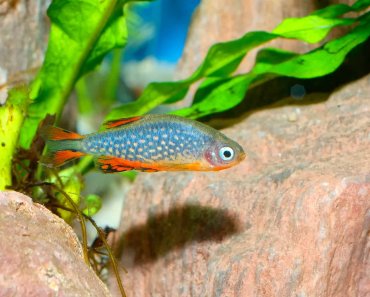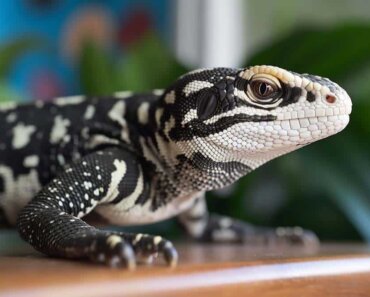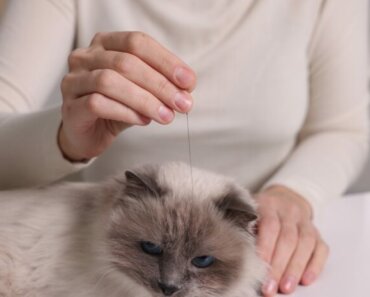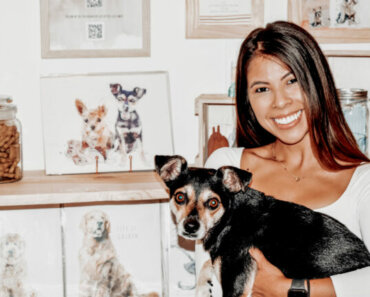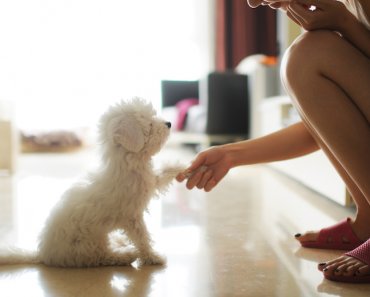Lipomas are common in dogs, especially as they get older. In most cases, these fatty lumps are harmless and can be treated with dietary and lifestyle changes, along with herbs and other alternative therapies.
Any time we spot something different or unusual on our dogs’ bodies, it can set off alarm bells, especially when it appears in the form of a lump or bump. As dog parents, our minds immediately start racing, and we frantically ask ourselves things like: “When did I last feel that spot? Are there any more bumps? Could it be the C word?” Often, however, these lumps turn out to be lipomas, common and usually harmless fatty masses. This article explains what lipomas are, and how they can be treated naturally.
UNDERSTANDING LIPOMAS
A lipoma is a benign (non-cancerous) tumor that can be found in dogs of any age, but is seen most frequently in older canines. A lipoma is round or oval in shape, appears under the skin, is soft and squishy, and mobile to the touch.
Sometimes lipomas simply appear with age, due to a dog’s metabolism slowing down and the body not eliminating fat and toxins as efficiently as it does in a younger canine. Other times, lipomas are genetic in origin.
Another lesser-known cause of lipomas is related to doggy apparel, such as coats and sweaters, as well as harnesses.
When buying canine clothing and gear, it’s important to ensure they don’t fit too tightly. This will help prevent the stagnation in circulation that’s associated with fatty cell overgrowth.
A lipoma can be tiny — the size of a rice grain or pea — but it can also grow larger. Some lipomas reach the size of tennis balls or grapefruits. Because lipomas consist of fat, they cause no pain to your dog, and surgical removal is only recommended if it’s in a spot that impedes your dog’s mobility, such as near an armpit or hind leg.
Flag it: Although the majority of lipomas are harmless, any new lump or bump on your dog should be brought to your veterinarian’s attention in order to rule out something more serious.

MONITORING IS IMPORTANT
Veterinarian Dr. Ellen Choi recommends “monitoring a lipoma if your dog is experiencing no pain or discomfort, as surgical removal does not guarantee the lipoma will not reappear in the same spot.” She also warns that lipomas can possibly appear again on another part of the dog’s body. Dr Choi favors keeping an eye on a lipoma by measuring it each time your dog visits the veterinarian. By accurately tracking it, both you and your vet can gather a better picture of whether it has grown, shrunk or remains the same size as time goes on.
If a dog is showing no signs of distress, and no changes in their daily habits, Dr, Choi also advises against aspirating a lipoma (taking a small sample of the lump with a fine needle) to determine whether or not it is cancerous.
Flag it: “Only around 50% of samples taken [from lipomas] yield accurate results, since the sample only accounts for the cells being withdrawn from that one spot rather than the whole growth,” says Dr. Choi. “And it is very rare that lipomas become cancerous.”
Some studies have also shown that aspirating a lipoma may irritate the area, promoting additional growth.
DIETARY AND LIFESTYLE CHANGES MAY HELP
Certain lifestyle adjustments can be made to your dog’s routine to help prevent lipomas from forming, or to optimize their chances of shrinking and disappearing. Veterinarian Dr. Kim Park says that a low-fat diet rich in natural ingredients and free of chemicals and preservatives, along with moderate exercise and a healthy weight, are all essential to preventing lipomas as well as helping to stunt and reduce their growth.
In some instances, overweight dogs that shed their extra pounds significantly reduced or eliminated their lipomas; since these growths are made of fatty cells, a low-fat lifestyle makes sense.
Flag it: “Get blood work done for your pup if you notice any changes in their eating habits or energy levels, in order to ensure that the lipoma is not a side effect of underlying illness and that all vital systems and organs — especially the liver and kidneys, which play a major role in eliminating toxins from the body — are in proper health,” advises Dr. Kim Park
If your dog has an existing lipoma, avoid putting pressure on the area and always keep it clean. For example, if he has a lipoma near his armpit, it may be a good idea to switch to a harness that doesn’t press down on the growth.
Although lipomas may be worrisome at first glance, they are mostly always harmless and your dog will continue leading a happy, healthy life. Before assuming that any new lump or bump is a lipoma, however, make sure to get them checked out by a veterinarian, just in case. If it does turn out to be a lipoma, monitoring its growth, making some adjustments to your dog’s diet and lifestyle, and adding in herbs and alternative therapies, may help shrink or even eliminate it.
Melody Parra is a UCLA graduate, having majored in English literature and Spanish. She graduated in two years on a merit scholarship. While attending university, Melody was a writer for UCLA’s LaGente Magazine where she was appointed her own column entitled “Senorita Chic”, which discussed Latin flavor in the fashion industry. Upon graduating, Melody went to Puerto Rico for a year to teach English/Writing. In addition to writing, Melody is an actress who loves all things creative and humanitarian. She is most passionate about animal welfare, film, and health/fitness. Her acting work may be seen on IMDb under Melody Parra.



